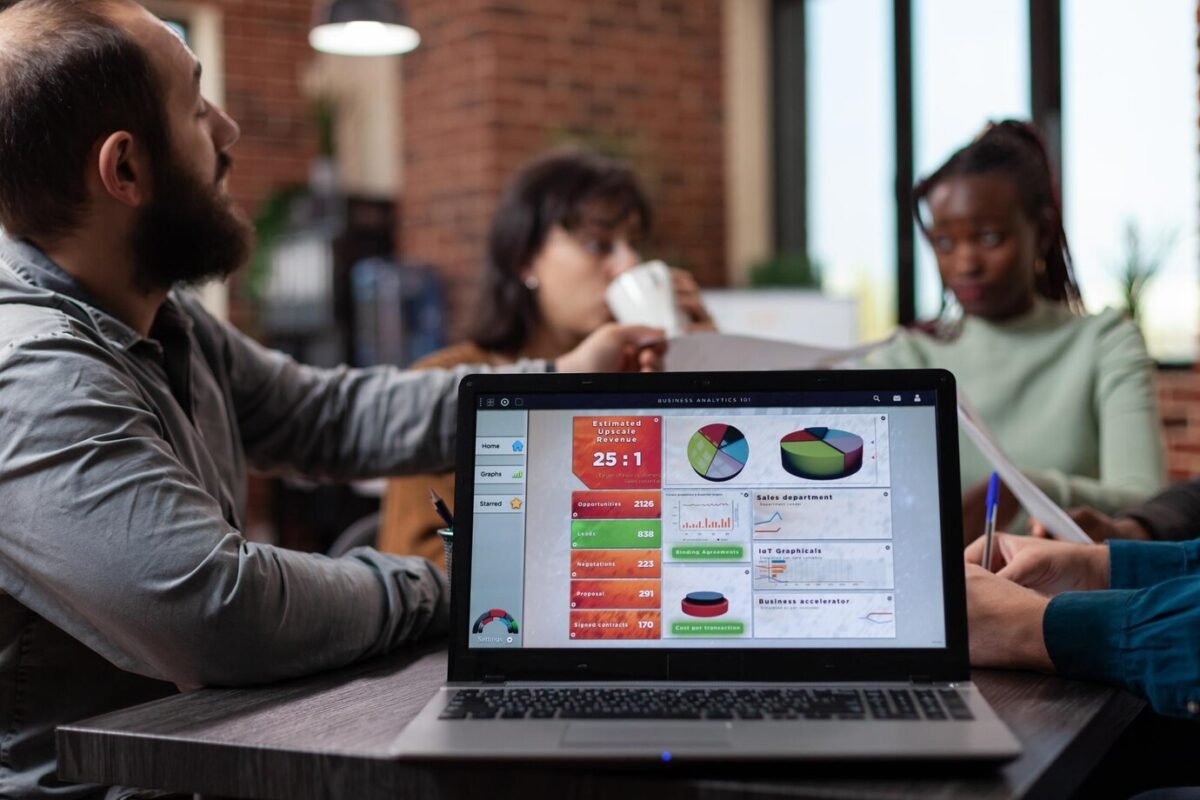In the digital marketing world, your landing page is often the first impression potential customers have of your brand. Whether it’s for capturing leads, driving sales, or promoting an event, a well-designed landing page can make the difference between a successful campaign and one that falls flat. But how do you create a landing page that converts visitors into customers? In this blog, we’ll guide you through the key steps to design a high-converting landing page for your digital campaigns.
What is a Landing Page?
A landing page is a standalone web page designed for a specific marketing campaign. Unlike your homepage or other parts of your website, a landing page has a singular purpose: to convert visitors. Whether it’s signing up for a newsletter, making a purchase, or downloading a guide, the goal is always clear—move the visitor further down the sales funnel.
1. Define Your Goal and Audience
Before you start designing your landing page, it’s crucial to define your goal. What action do you want visitors to take once they land on the page? Your goal will determine the design, content, and layout of the page. For example:
- Lead Generation: If you want to gather leads, you’ll need a clear and easy-to-use form.
- Sales: If your goal is to sell a product, focus on showcasing the benefits and features of the product with a strong call to action (CTA).
- Event Registration: If you’re promoting an event, your landing page should highlight key event details and include a simple registration form.
Once your goal is clear, you can better tailor the content and design to meet the needs of your target audience.
2. Craft a Compelling Headline
The headline is the first thing your visitors will see, so it’s essential to make it attention-grabbing and aligned with your campaign. A strong headline should:
- Clearly communicate the value: Make sure it’s clear what the visitor will get by taking action. Avoid jargon or vague promises.
- Be concise and specific: Visitors should instantly understand what the landing page offers and why it’s relevant to them.
- Relate to the ad or campaign: If visitors clicked through from a specific ad or social media post, ensure the headline matches the message they saw.
For example, instead of a generic “Get Our Free Ebook,” try something like “Unlock Your Ultimate Guide to SEO Success – Free Ebook Inside!”
3. Keep the Content Simple and Focused
The content on your landing page should be direct and to the point. Avoid overwhelming visitors with unnecessary information. Instead, focus on:
- Explaining the benefits: Highlight the benefits of your offer, not just the features. Visitors want to know how your offer can solve their problems or fulfill their needs.
- Using bullet points: Bullet points make your content easy to scan and understand quickly.
- Building trust: Include testimonials, reviews, or trust badges to show credibility, especially if you’re asking for sensitive information (like payment details).
For example, if you’re offering a free trial of your software, mention:
- How easy it is to use.
- What problem it solves.
- The positive impact it’ll have on the visitor’s work.
4. Optimize Your Call to Action (CTA)
Your call to action is the key element that drives conversions, so it needs to be compelling and clear. Here’s how to optimize your CTA:
- Make it action-oriented: Use action verbs like “Get Started,” “Download Now,” or “Claim Your Offer.”
- Create urgency: Phrases like “Limited time offer,” or “Sign up today” help prompt immediate action.
- Use contrasting colors: Make your CTA stand out by using a color that contrasts with the rest of the page design.
- Keep it above the fold: Place your CTA in a location where it’s visible without visitors having to scroll. If you need multiple CTAs, place one at the top of the page and one towards the bottom.
5. Use High-Quality Visuals
Visuals play a significant role in engaging visitors and conveying your message. High-quality images, videos, and graphics help:
- Enhance user experience: Use visuals that support your content and showcase your offer in action (e.g., a product demo video or a screenshot of your software interface).
- Build trust: Real photos (e.g., customer testimonials or team members) can make your business feel more authentic.
- Focus on benefits: Use visuals that focus on how your offer solves a problem. For example, before-and-after images or customer success stories can demonstrate tangible results.
Make sure your visuals are not too cluttered and that they align with your brand aesthetics.
6. Optimize for Mobile
A significant portion of online traffic comes from mobile devices. If your landing page isn’t optimized for mobile, you’re likely losing potential conversions. To ensure a smooth mobile experience:
- Responsive design: Your landing page should adjust seamlessly to any screen size, from smartphones to tablets.
- Easy navigation: Avoid complex layouts or excessive scrolling. Keep your content simple and organized.
- Fast loading times: Mobile users tend to have less patience, so ensure your page loads quickly. Compress images and minimize heavy scripts.
7. Reduce Distractions and Keep It Focused
A landing page with too many options or links can confuse visitors and reduce the likelihood of conversion. To prevent distractions:
- Limit navigation: Remove unnecessary menu links, sidebar elements, or external links that might take visitors away from your page.
- Single focus: Keep the page dedicated to one goal. Whether it’s signing up, making a purchase, or downloading a resource, don’t crowd your page with multiple CTAs.
8. Test and Optimize Regularly
Creating a high-converting landing page is not a one-and-done task. It requires continuous testing and optimization. Regularly conduct A/B testing on key elements like:
- Headlines
- CTA buttons
- Form fields
- Visuals
Testing helps you understand what resonates most with your audience and allows you to optimize for better performance. Even small tweaks can lead to significant improvements in conversion rates.
9. Include Social Proof
Social proof is a powerful psychological trigger that can help convert visitors. It’s the idea that people tend to follow the actions of others, especially when they see that others have benefited from something. Consider adding:
- Customer testimonials: Real reviews or success stories from previous customers can build trust.
- User-generated content: Showcase images or quotes from users who have successfully used your product or service.
- Trust badges: Add security and certification logos to show that your site is safe and reliable.
10. Thank You Page and Follow-Up
Once a visitor has completed the desired action, don’t forget to show appreciation. A thank you page or confirmation message reassures the visitor that their action has been successfully completed. You can also use this page to encourage further engagement, such as offering another related product, asking them to share on social media, or even upselling.
Additionally, follow up with a thank you email that reiterates the next steps or provides further information.
Conclusion
A high-converting landing page is a vital component of any successful digital marketing campaign. By focusing on a clear goal, compelling content, a strong CTA, and optimization for both desktop and mobile, you can design a landing page that converts visitors into customers. Always test, refine, and adapt your strategy based on user behavior, and soon you’ll see improved conversion rates and greater campaign success.












